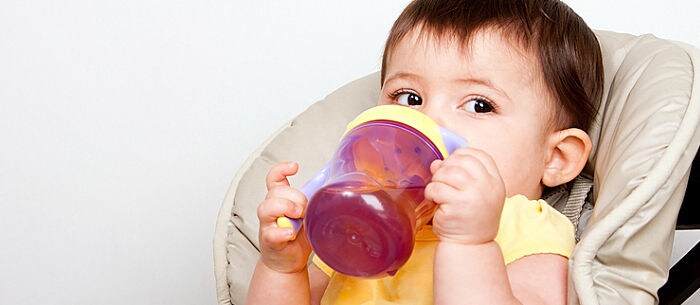You’re a parent, so you’ve probably heard the buzz about making sure to use BPA-free products to ensure your child’s health and safety. But what does BPA-free mean?
- BPA stands for Bisphenol-A, an estrogen-imitating chemical used to produce reusable plastic products, such as baby bottles, toddler sippy cups and plastics you might use for storing leftover food.
- These types of chemicals have reportedly had health effects on humans, specifically in the fetal and infant states.
- BPA have recycle codes on their bottoms with the number 3 or the number 7
- The problem with BPA is that it can leach from containers into beverages and foods and pose a potential health risk.
“BPA has been used in the U.S. since the 1950s, but because of a growing concern from consumers regarding its safety, the chemical was phased out of use by the industry,” says Dr. Whitney Christian, a health scientist for Cardno ChemRisk. While BPA is no longer used in making baby bottles, sippy cups and infant formula packaging, the U.S. Food and Drug Administration allows for its use in other food packaging and maintains that it is safe to do so.
Why Should You Avoid BPA?
BPA is a chemical with estrogenic activity (EA), meaning it mimics the estrogen hormone. Chemicals with estrogenic activity “have been reported to have potential adverse health effects in mammals, including humans, especially in fetal and infant states,” says Dr. George Bittner, a professor of neurobiology at the University of Texas at Austin who has served on many National Institutes of Health panels. Some bad effects of any EA chemical, including BPA, are early menarche, reduced sperm counts, altered functions of reproductive organs, obesity and increased rates of cancer, Dr. Bittner explains.
What Does BPA-Free Mean for Safety?
While you might conclude that products marketed as BPA-free are safe for your child, Dr. Christian points out that just because a product doesn’t contain BPA doesn’t make it safe. “In fact, there is considerable concern over the use of BPA substitutes and BPA polymer alternatives because they are largely understudied,” he says.
BPA-free products don’t contain BPA, but they still contain chemicals, asserts Dr. Bittner, who is also founder of the testing company CertiChem. “BPA is just one set of chemicals that have estrogenic activity,” he says. CertiChem found that 70 percent of products that are BPA-free still leach EA chemicals into beverages and food.
How to Identify BPA Products
You’ll find that plastics that contain BPA have recycle codes on their bottoms with the number 3 or the number 7. “Plastics labeled ‘1,’ ‘2,’ ‘4’ and ‘5’ are the safest,” says Dr. Christian. “However, avoid reusing plastics labeled ‘1’ and ‘2,’ and do not use them with warm or hot liquids.” Also, avoid drinking beverages or eating foods stored in plastic containers if you’re pregnant or nursing because you could pass those chemicals to your baby.
Before you become too confused on what products to buy and use, the good news is that you can take some safety measures.
How to Best Ensure Safety
Parents who don’t want to risk any chemicals possibly leaching into their child’s drinks can use glass bottles and stainless steel sippy cups, although using glass bottles might not always be practical.
Another safety method is to avoid putting plastic bottles, sippy cups or food storage containers in the microwave or dishwasher or exposing them to ultraviolet radiation from sunlight. “Leaching of chemicals from plastics can also happen from repeat use and from scratches that accumulate over time,” says Dr. Christian.
With some careful consideration of products you use and buy and special attention to how you use and care for your containers, you can reduce your family’s exposure to BPA and EA chemicals
Curious about other chemicals? Read Is Low-VOC Paint Safer?
Laura Agadoni is a parenting writer and mom whose articles appear in various publications such as Modern Mom, The Penny Hoarder, Tom’s of Maine, Global Post and Livestrong.
* This article is for general informational purposes only. It is not intended nor implied to be providing medical advice and is not a substitute for such advice. The reader should always consult a health care provider concerning any medical condition or treatment plan. Neither Care.com nor the author assumes any responsibility or liability with respect to use of any information contained herein.
